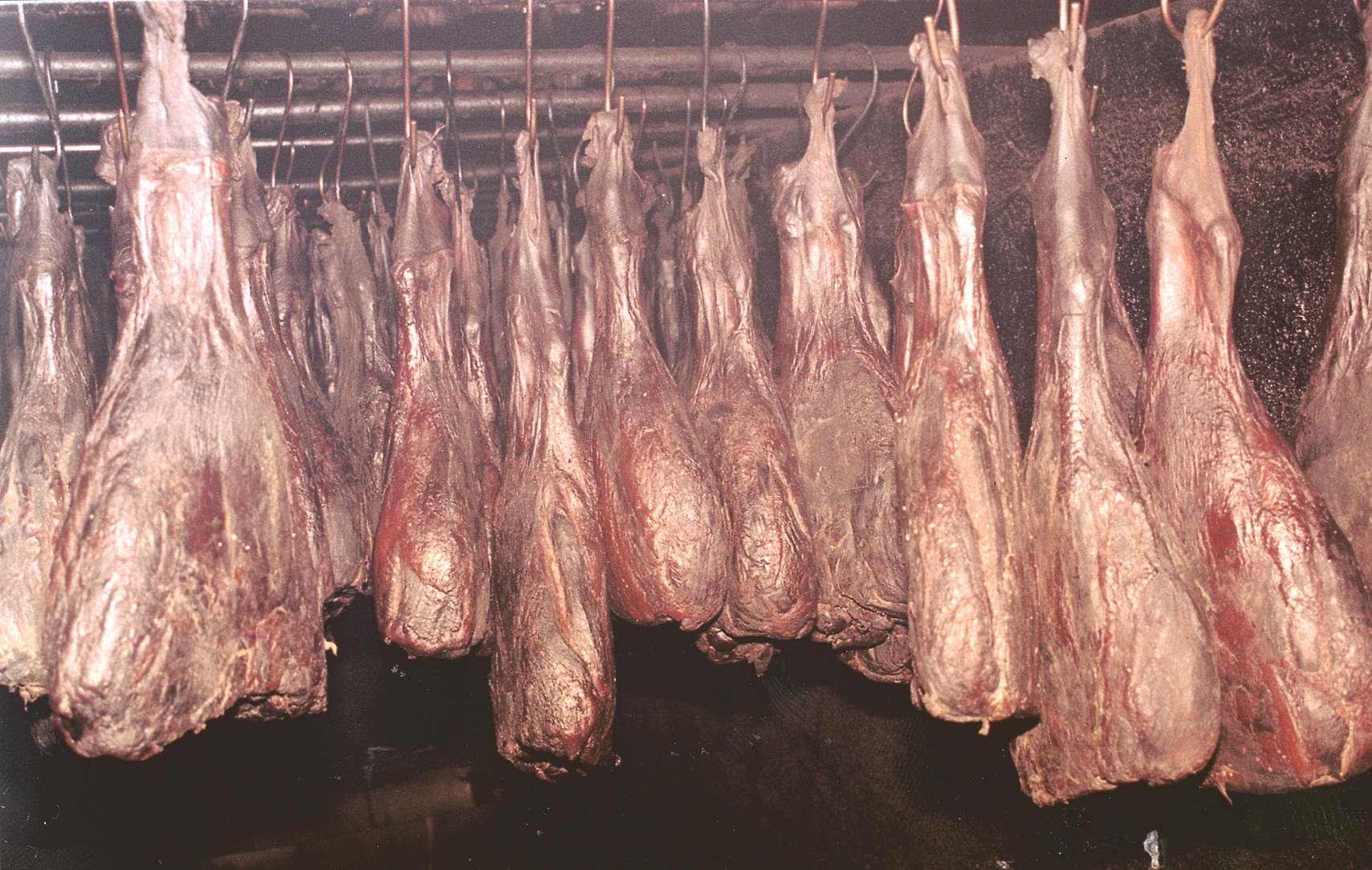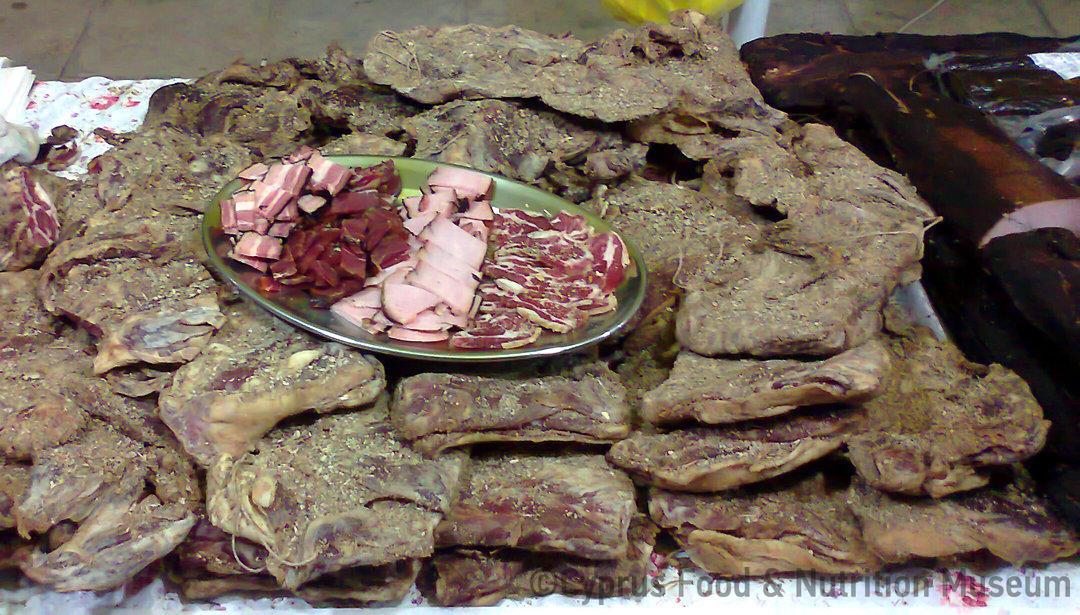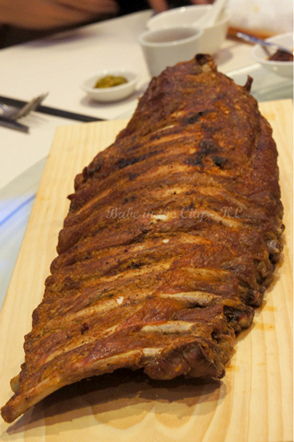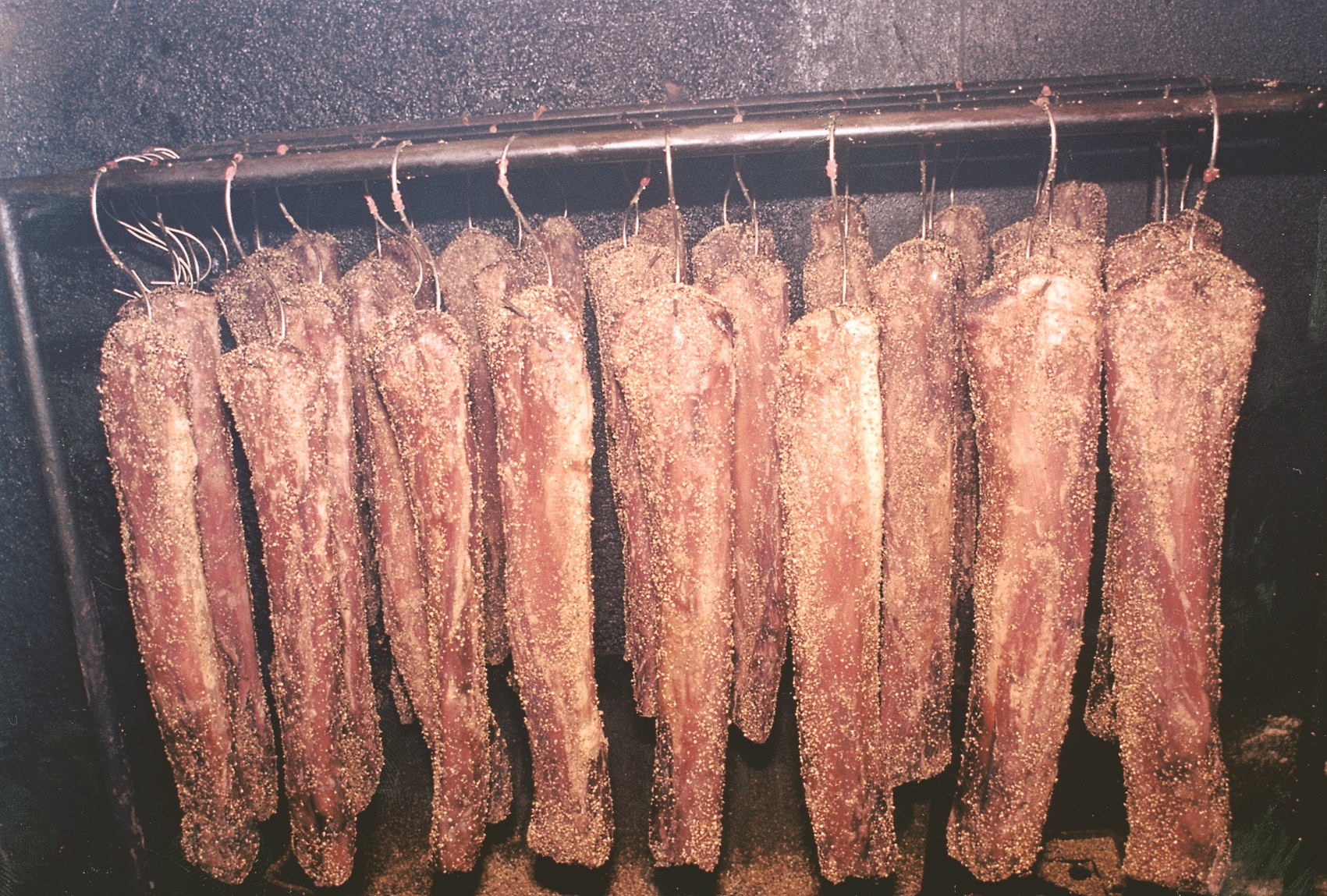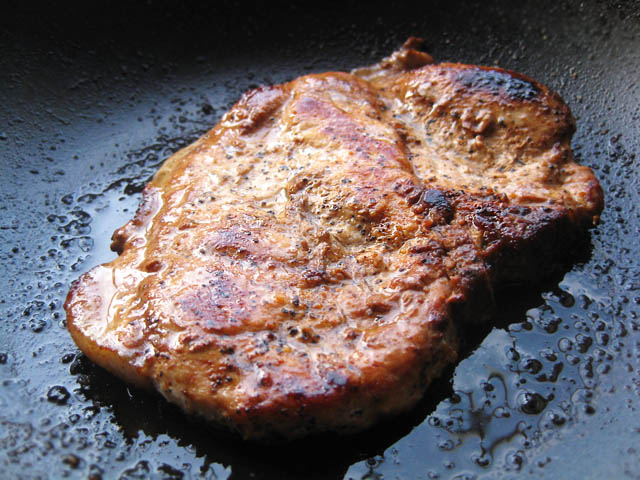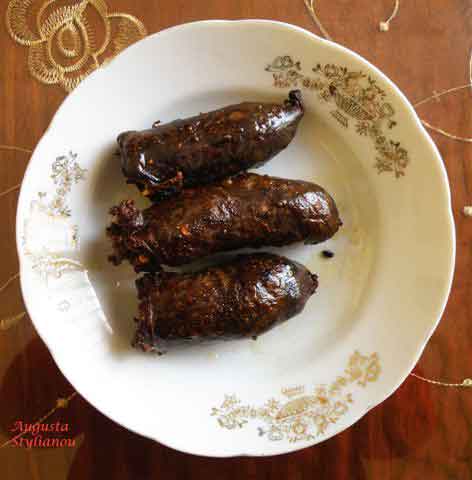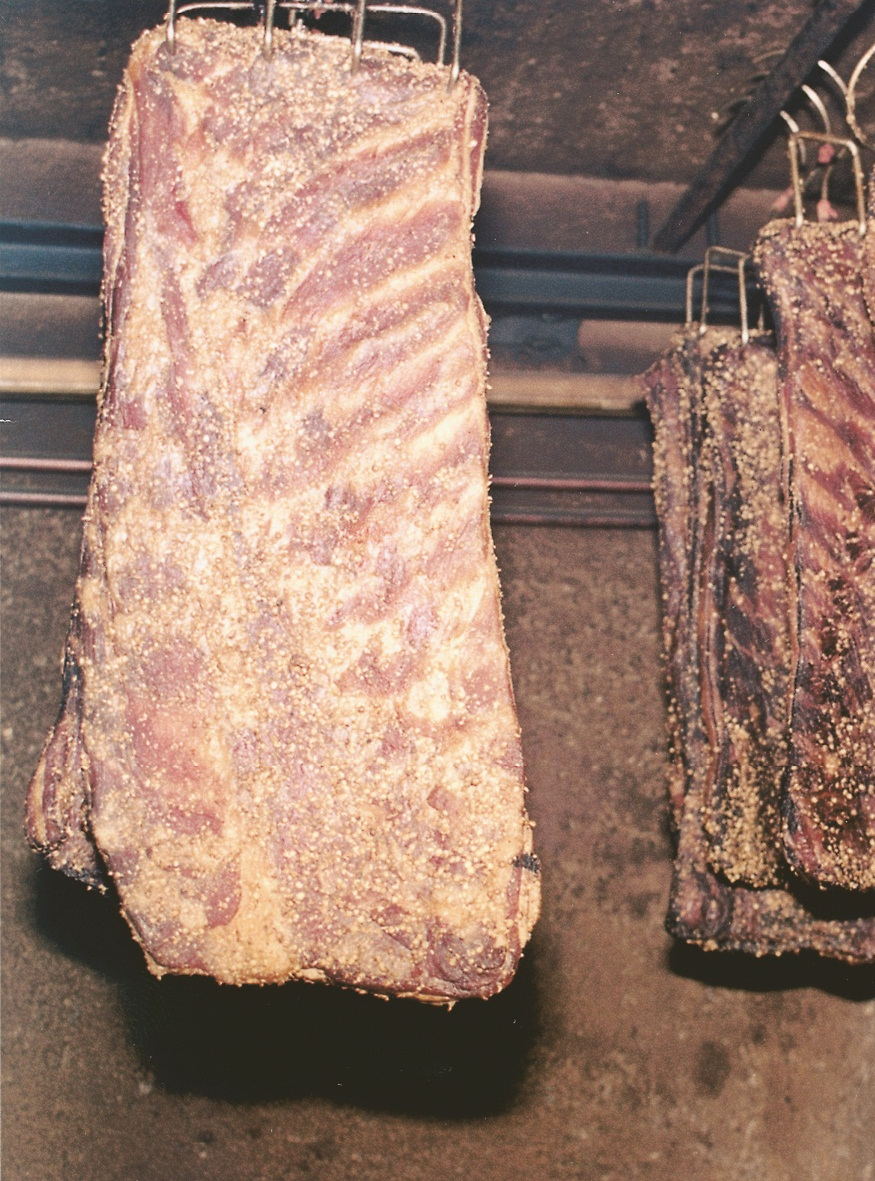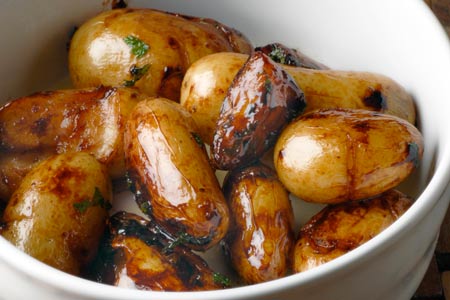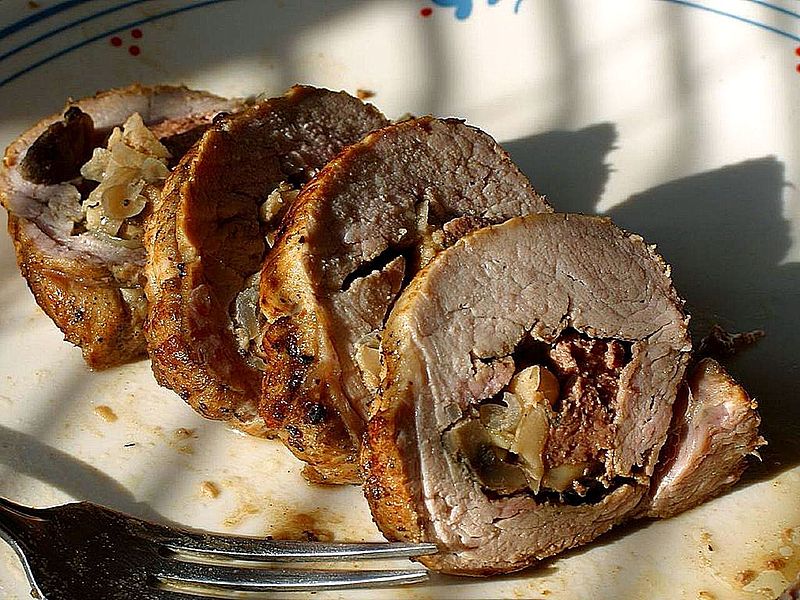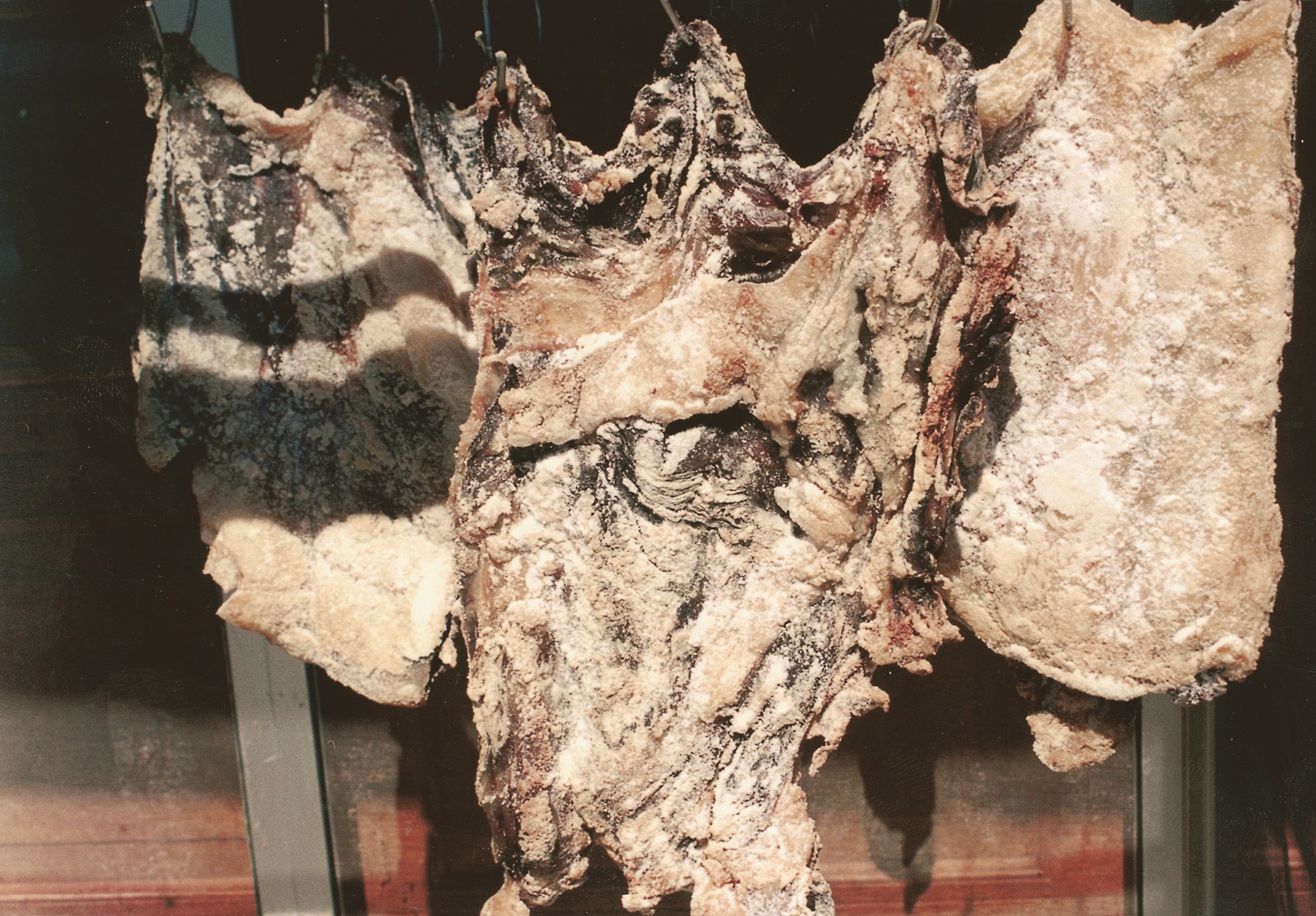Cyprus lountza is made from pork tenderloin matured in salt, red wine and dry coriander and then smoked daily for 20 days. Lountza is widely enjoyed as part of the traditional mezé and in sandwiches.
Name - Origin
Made with meat from the back of a pig (Petrou-Poeitou 2013, entry Λούντζα, 79).
It is a smoked ham made from pork loin. It is produced mainly in Pitsilia from pork meat which is 'roasted' (matured) in local red dry wine and smoked using branches of indigenous trees and bushes. It has a dark colour, a strong characteristic smell of wine and smoke and a slightly salty taste.
Xenophon P. Pharmakidis notes in his Glossary that the pieces of lean pork, which, after a few days of soaking in wine, are dried and smoked are also called lountzes (Kypri 1983 [2003²], entry λοῦντζα,η, 77).
ETYM. < Italian lonza (Yangoullis 2009, entry λούντζα,η, 260; Petrou-Poeitou 2013, entry Λούντζα, 79)
French longe [longe = part of the animal]. A ham named Lonzo is found in Corsica and Longe in Tinos island (Petrou-Poeitou 2013, entry Λούντζα 79).
In Stroumbi village, lountza was called apátz̆in ((Xioutas 1978, 155; Petrou-Poeitou 2013, entry Απάτζι, 26), while in Agastina village and Akanthou village, lountza was called koukoúin (Xioutas 1978, 155; Petrou-Poeitou 2013, entry Κουκκούι, 66).
Traditional preparation method: after slaughtering the pig, they would carefully remove the two cylindrical strips of lean meatwith minimum fat. In order to prepare lountza, the housewife had to salt, season with coriander and marinate the meat in wine (Kyprianou 1970). After that, she would either remove the salt and leave the lountza to dry on the hearth and be smoked, or she would smoke it with thyme for 10-15 days (Neophytou 1991, 70-71).
The current method: the pork tenderloin is sprinkled with salt and stays in this state for 5-7 days. It is immersed in wine in which it remains for 2-3 days. Immediately afterwards, the meat is smoked indoors every day using branches of native trees or bushes. The smoking temperature does not exceed 28 °C and the meat is not placed directly over the fire. During smoking, the meat is occasionally - optionally - compressed in special presses. Coriander is also added. Finally, the meat is optionally placed in a shaded, ventilated area (curing room).
Functional and symbolic role
Lountza was a sought-after and tasty mezé and was, therefore, considered a luxurious snack (Xioutas 1978, 156). Pharmakidis stresses that it is sweeter and tastier than sausages (Kypri 1983 [2003²], entry λοῦντζα,η, 77).
Lountza made in Paphos and Pitsilia was famous for its taste. Lountza from Pitsilia is fried or grilled and served mostly for breakfast, in sandwiches or as an appetiser.
Every rural family, up until the mid-20th century, would keep 1-2 pigs to be slaughtered at Christmas and to make sausages, thus ensuring that the household would have meat all year round.
Additional information and bibliography
A cold climate favours the production of lountza and other cured meats, as it assists in their preservation.
Kypri Th. D. (ed.) (1983 [2003²]), Υλικά διά την σύνταξιν ιστορικού λεξικού της κυπριακής διαλέκτου, Μέρος Β΄, Γλωσσάριον Ξενοφώντος Π. Φαρμακίδου, Publications of the Centre for Scientific Research, IX, Nicosia.
Kyprianou Ch. St. (1970), Μερικές κυπριακές τροφές του χωριού Τσακκίστρα, Publications of Lapithos High School, Lapithos.
Neophytou K. (1991), «Συντήρηση κρέατος», Λαογραφική Κύπρος 221,41, 63-73.
Xioutas P. (1978), Κυπριακή λαογραφία των ζώων, Publications of the Centre for Scientific Research, XXXVIII, Nicosia.
Petrou-Poeitou E. (2013), Από πού κρατάει η σκούφια τους. Λέξεις και ιστορίες από τον κόσμο της γεύσης, Epiphaniou Publications, Nicosia.
Ministry of Agriculture, Natural Resources and Environment, Department of Agriculture (2010), Gastronomic Map of Cyprus, Press and Information Office, Nicosia.
Stalo Lazarou, Antonia Matala, Demetra Dimitriou, Argyro Xenophontos, Tonia Ioakim

